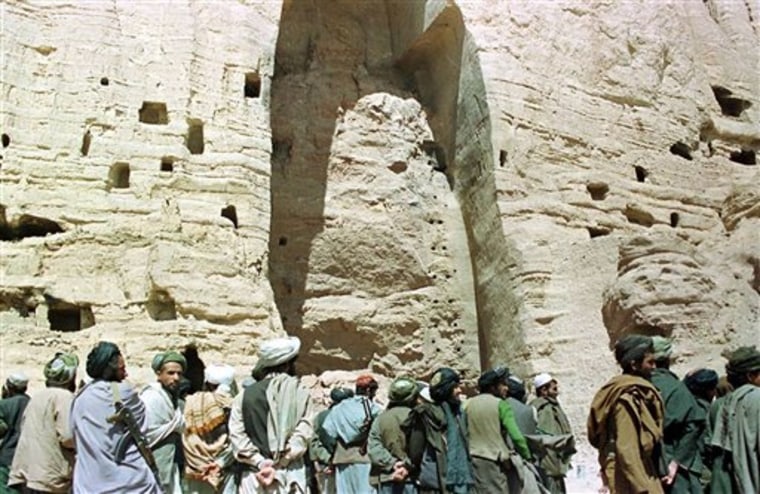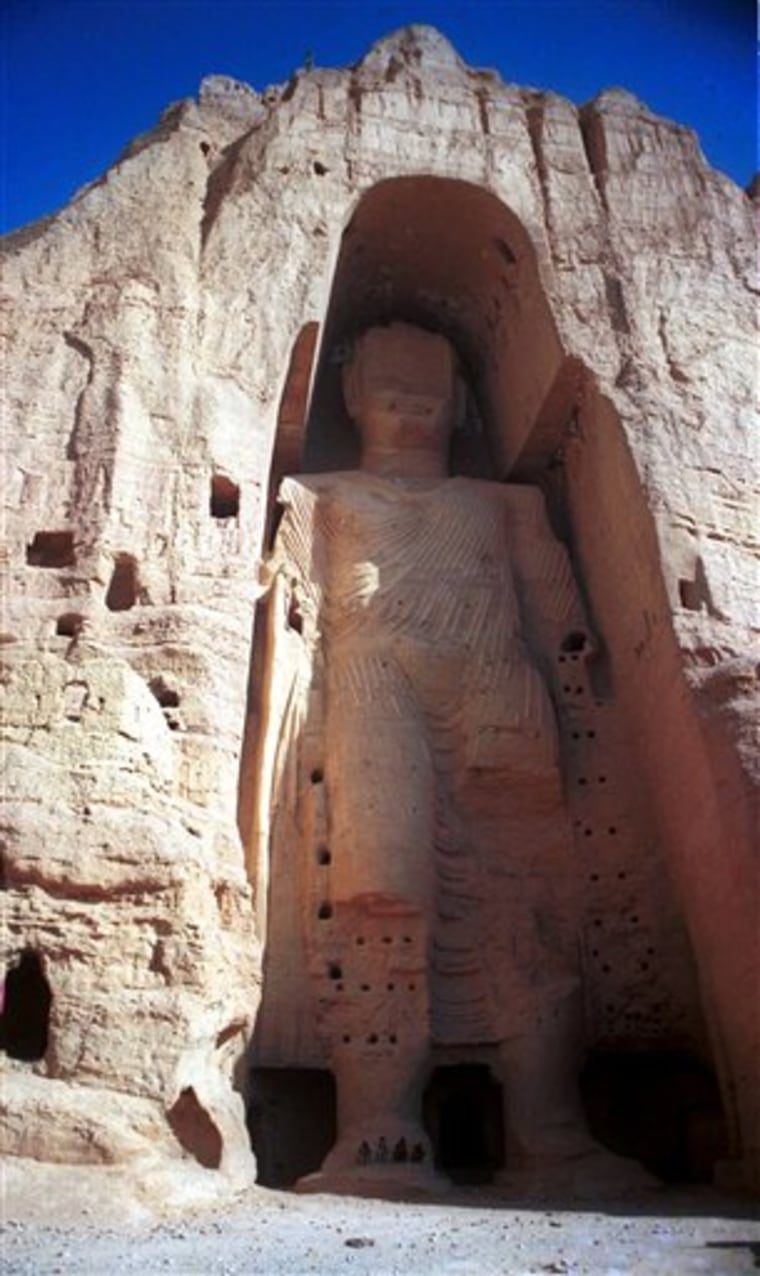German scientists said Monday it may be possible to reconstruct one of two giant 1,500 year-old Buddha statues dynamited by the Taliban in central Afghanistan 10 years ago, which prompted a worldwide outcry and left behind only towering cliff caverns.
Researchers have studied several hundred fragments of the sandstone statues that once towered up to 180 feet high in Bamiyan province, and found that they were once brightly colored in red, white and blue, said Erwin Emmerling of Munich's Technical University.
The professor of restoration and conservation science, who visited the UNESCO world heritage site about 15 times since 2007, says research has shown that the smaller one of the pair — some 125 feet high — could be reconstructed with the recovered parts even though there are "political and practical obstacles" to overcome.
"Conservation of the fragments would require the construction of a small factory in the Bamiyan Valley — alternatively some 1,400 rocks weighing up to two tons each would have to be transported to Germany," the university said in a statement Friday.
Emmerling is to present the findings at a UNESCO conference on the Buddha statues' future starting Wednesday in Paris. The Afghan government, whose representatives are also attending the expert meeting, will ultimately decide on the statues' fate.

The Taliban destroyed the towering Buddha statues in the Bamiyan Valley in March 2001, less than a year before international forces toppled their government.
The Bamiyan Valley, about 160 miles west of Kabul at an altitude of some 8,000 feet, once formed a branch of the Silk Road, which contributed to the diffusion of Buddhism from India to the region.
Emmerling's team says mass spectrometer tests have allowed them to better determine the statues' age. Organic material in clay layers of the fragments were found to date from between 544 and 595 for the smaller Buddha and between 591 and 644 for the big one.
The statues' fragile sandstone fragments left over from the explosions are currently covered on the site or stored in a warehouse in Bamiyan province awaiting the Afghan government's decision.
